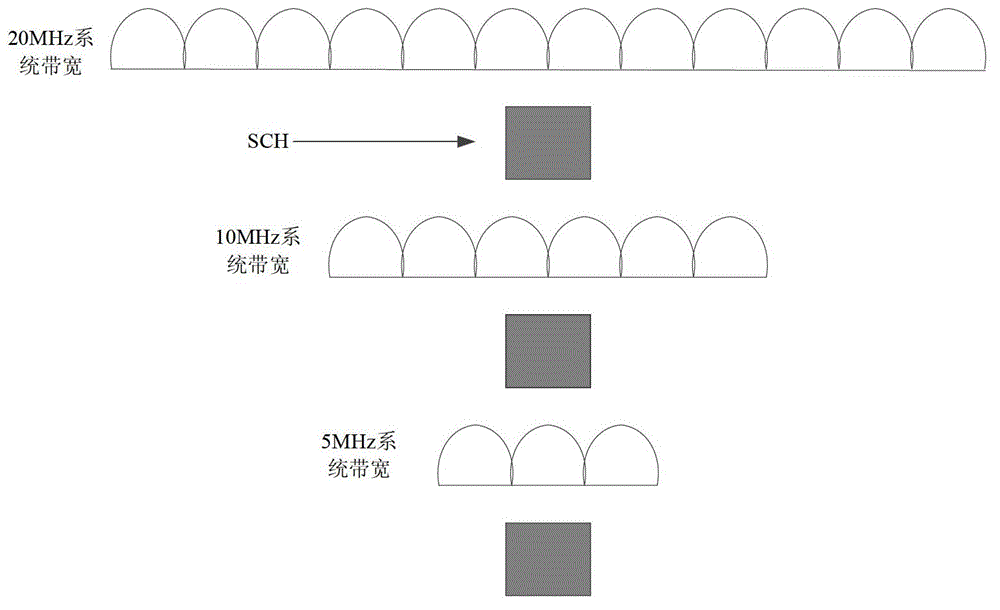Signal synchronization method, receiving end and system
A signal synchronization and receiver technology, applied in the field of communication, can solve the problems of long time and large amount of calculation.
- Summary
- Abstract
- Description
- Claims
- Application Information
AI Technical Summary
Problems solved by technology
Method used
Image
Examples
Embodiment 1
[0173] Please refer to image 3 , which shows a method flowchart of the signal synchronization method provided by Embodiment 1 of the present invention. This embodiment is mainly illustrated by taking the signal synchronization method applied to a receiving end as an example. The receiving end may be a UE (User Equipment, user equipment), specifically a mobile phone used by a user; the corresponding sending end may be a base station. The signal synchronization methods include:
[0174] Step 301, obtaining the sequence y to be analyzed from the received time domain signal;
[0175] Step 302, after downsampling the sequence y to be analyzed by α times to obtain a downsampling sequence, perform an initial timing estimation according to the downsampling sequence and n different preset integer multiple frequency offset candidate values, and determine the initial timing position T coarse , Integer frequency offset estimate and the primary synchronization sequence corresponding t...
Embodiment 2
[0181] Since the previous embodiment only completes the OFDM symbol block synchronization, for a more detailed description, the second embodiment that simultaneously completes the OFDM symbol block synchronization, wireless data frame timing synchronization and frequency offset estimation is also provided. In a nutshell, Embodiment 2 can be divided into: an initialization phase, an initial timing estimation phase, an initial frequency offset estimation phase, a timing re-estimation phase, an SSS detection phase, and a frequency offset re-estimation phase. Wherein, after the timing re-estimation phase is completed, the OFDM symbol block synchronization process can be completed; after the SSS detection phase is completed, the wireless data frame timing synchronization process can be completed; after the frequency offset re-estimation phase is completed, the frequency offset estimation process can be completed. details as follows:
[0182] Please refer to Figure 4A , which show...
Embodiment 5
[0338] Please refer to Figure 7 , which shows a structural block diagram of the communication system provided by Embodiment 5 of the present invention. The communication system includes a base station 720 and a receiving end 740 . in:
[0339] The base station 720 is a base station conforming to related protocols of the LTE system;
[0340] The receiving end 740 may be the receiving end provided in Embodiment 3 or Embodiment 4.
[0341] To sum up, in the communication system provided by this embodiment, the initial timing estimation is performed on the down-sampled sequence at the receiving end by using integer multiple frequency offset compensation, and the result of the initial timing estimation is used as the input of the initial estimation of the frequency offset. The result of partial initial estimation is used as the input of timing re-estimation, so that frequency offset compensation and timing synchronization are combined to realize joint synchronization in the tim...
PUM
 Login to View More
Login to View More Abstract
Description
Claims
Application Information
 Login to View More
Login to View More - R&D
- Intellectual Property
- Life Sciences
- Materials
- Tech Scout
- Unparalleled Data Quality
- Higher Quality Content
- 60% Fewer Hallucinations
Browse by: Latest US Patents, China's latest patents, Technical Efficacy Thesaurus, Application Domain, Technology Topic, Popular Technical Reports.
© 2025 PatSnap. All rights reserved.Legal|Privacy policy|Modern Slavery Act Transparency Statement|Sitemap|About US| Contact US: help@patsnap.com



